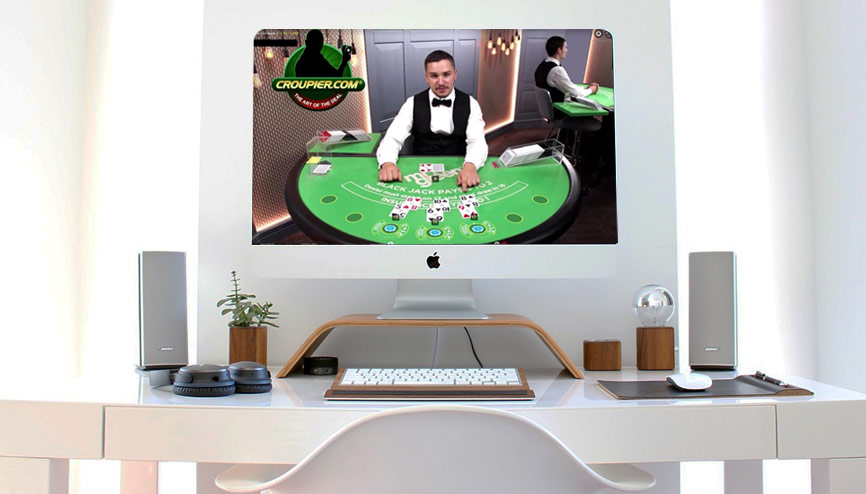Online casino gaming has become increasingly popular in recent years, and the growth of live casinos has been a significant contributing factor. With its dynamic and immersive nature, live casino gaming provides players with a more authentic and engaging experience than traditional online casino games. In this article, we will closely examine how live casino games work, from pre-production to post-production.
Pre-Production
The first stage of creating a live casino game is pre-production. During this stage, the game concept is developed, and the casino studio is designed and laid out. The selection and training of dealers and staff are also crucial components of this stage. Finally, testing and quality control are essential to ensure that the game functions before it is released to players.
Game Concept Development
The first step in creating a live casino game is developing a concept for the game. Creating involves identifying the type of game, the rules, and the format used. The game concept should be appealing to players and provide an engaging experience.
Casino Studio Design and Layout
Once the game concept is developed, the casino studio must be designed and laid out. The studio must be large enough to accommodate the game table, equipment, and dealers. The lighting and sound systems must also be considered to ensure that the game table and dealers are visible and audible to players.
Dealer and Staff Selection and Training
The selection and training of dealers and staff are also critical pre-production components. Dealers must be experienced in the game they are dealing with and have excellent communication skills. Staff members must be knowledgeable about the game and its rules and be able to answer player questions.
Testing and Quality Control
Before the game is released to players, it must undergo testing and quality control. This involves testing the game’s functionality, ensuring that it runs smoothly and that there are no glitches or bugs. The game must also be checked for fairness to ensure it is not biased toward the casino.
Production
Once pre-production is complete, the game enters the production stage. During this stage, the game is set up, and the equipment and technology are prepared. The game is then live-streamed to online players, and game flow and pacing are managed. Finally, player bets and payouts are handled, and audio and visual elements are managed.
Equipment and Technology Preparation
The first step in the production stage is setting up the equipment and technology needed to broadcast the game to players. This includes cameras, microphones, and video streaming software. The game table is also set up, and the necessary equipment, such as cards and chips, is available.
Live Streaming to Online Players
Once the game table and equipment are set up, the game is live-streamed to online players. This is done through a video streaming service that allows players to see and hear the game in real time. The game flow and pacing are managed to ensure that the game runs smoothly and that players have enough time to place their bets.
Handling of Player Bets and Payouts
As players place their bets, the dealer will manage the chips and cards, ensuring that each bet is recorded correctly. When the game ends, the dealer calculates the payouts and distributes the winnings to the players.
Management of Audio and Visual Elements
Throughout the game, the audio and visual elements must be managed. This includes ensuring that the sound quality is clear and that the dealer’s voice can be heard over the background noise. The camera angles must also be managed to ensure players can see the game table and the dealer.
Post-Production
Once the game is complete, the post-production stage begins. This involves reviewing and analyzing the game’s performance, implementing updates and changes, maintaining equipment and technology, and receiving player feedback and evaluations.
Review and Analysis of Game Performance
After the game is complete, the game’s performance must be reviewed and analyzed. This involves looking at the number of players, the length of the game, and the amount of money bet and won.
Implementation of Updates and Changes
Once the game’s performance has been analyzed, updates and changes can be made to improve the game. This may include adjusting the rules, making changes to the studio, or adding new features. Any changes must be tested and reviewed to ensure they do not affect the game’s fairness or functionality.
Maintenance and Repair of Equipment and Technology
The equipment and technology used in live casino games must be maintained and repaired regularly. This includes checking and replacing equipment such as cameras and microphones, ensuring that the video streaming service is functioning correctly, and updating the software used in the game.
Feedback and Evaluation from Players
Finally, feedback and evaluations from players are critical to improving live casino games. Players can provide feedback on the game’s rules, features, and overall playing experience. Evaluations can be used to identify any game issues and make changes to improve them.
Conclusion
Live casino games provide players with an immersive and authentic gaming experience, unlike traditional online games. Understanding how live casino games work, from pre-production to post-production, is essential for players to fully appreciate the effort and attention to detail in creating these games.

